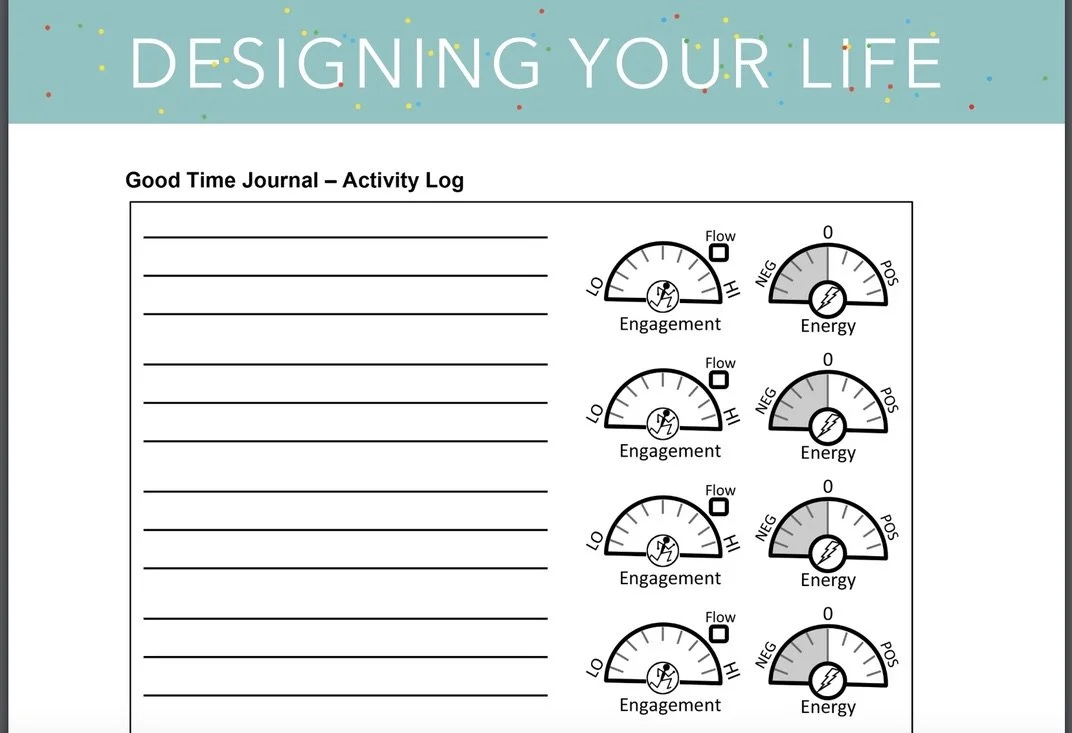At some point in my coaching relationships, no matter what other issues clients may be working on, nearly every one of them seeks help with time management.
Time scarcity is real. We repeatedly ask ourselves or are asked by others to do more than is humanly possible in any given timeframe. As executive coach Jerry Colonna has put it, “We live with a work ethos that says, ‘I am not really working unless I am panting.’”[1] In this environment, managing demands on our time requires conscious effort. So does managing the decisions we make about how we use our time. Most of us can learn to use our time more effectively by reducing distractions and improving our focus.
But no matter how good we get at reducing demands and managing our time, it seems that over and over, we end up feeling the pressures of time scarcity.
I recently had an “a-ha” moment that helped me understand that time management is only one small piece of the puzzle. I was doing some reading for another project and came across this admonition: manage your energy as well as your time. This thought from psychologist Victor Strecher, author of Life On Purpose, made me step back and rethink.
When I’m not managing my time well, it’s often because my energy is waning. I undoubtedly need to continue to work on time management, but I also need to concentrate on better managing my energy.
Dr. Strecher used the acronym SPACE to sum up his strategies to managing his energy levels. SPACE stands for:
Sleep
Presence (by which he means “being here now.” Yoga, meditation, contemplative practices, and time in nature are among his suggestions for practicing presence.)
Activity (exercise)
Creativity
Eating well.
These are all great suggestions, and there’s plenty of research to show how these practices can help maximize our energy levels. Take exercise for example. Research shows that aerobic exercise—activity that raises your heart rate and makes you sweat—is a hugely effective way to lift your mood, increase energy, sharpen focus, and relax both the mind and body.
I could spend more time on Dr. Strecher’s energy management strategies, but a lot has been written elsewhere about them. Instead I want to suggest a tool to help you identify your own best strategies.
This tool was developed by Dr. Bill Burnett and Dr. Dave Evans, professors at Stanford and the authors of Designing Your Life: How to Build a Well-Lived Joyful Life. They explain that it’s important to understand what activities engage and energize us.
Let’s take those two things separately. When we are engaged in an activity, we are mentally invested in it, and we are usually enjoying it—or we at least see the value of the work. I’ll give you a couple of examples from my teaching days. Teaching a class was an activity that engaged me completely. Teaching was like a dance with a lot of different steps: a bit of lecture, a bit of Scoratic questioning, a film or music clip, a map or a painting, a bit of small group discussion, a bit of large group facilitation. I was fully present while performing this classroom dance. I was absorbed in the work, and I knew that work mattered. When I was teaching was fully invested in the work, and time slipped away.
I could even be engaged in parts of the job that were not terribly enjoyable—like grading papers. Giving students feedback was an important part of the learning process, and grading usually absorbed me—even if it was grueling at times. I knew that it mattered, and I could see the results as my students learned to be better thinkers and writers over the course of a semester.
As engaging as teaching and grading could be, both activities required a big expenditure of energy. After teaching a class, I was tired, and after grading a big stack of essays, I was utterly exhausted. To replenish my energy, I needed to make time for other activities—many of them unrelated to the work—including exercise, reading, and time with friends.
Burnett and Evans’ “Good Time Journal” is a tool to help you log the major activities in your day and assess how engaging and energizing each of them is for you. They suggest that you complete this exercise every day for about two weeks so that you can get a fair picture of the variety of activities that fill your typical days. And it really doesn’t take very much time—five minutes at the end of the day (or the beginning of the next day) is enough to help you log the big stuff and see some patterns.
You can link to the tool here. And here’s a link to a worksheet you can use to make some sense of your results.
The first time I did this exercise back in 2016, I was not surprised to see that my morning walk charged my batteries for the day and my evening yoga practice made me feel re-energized after a long day of teaching and grading and class prep and meetings (and more meetings.)
But I was surprised to see the extent to which teaching a class drained my energy, even though that activity was off the charts for my engagement level. I was even more surprised to realize that I got energized by eating lunch with my colleagues in the cafeteria each day. For an introvert like me, it was a real revelation to realize that I had more energy on the days I laughed and chatted (and yes, gossiped) with my colleagues over a meal than on the days I ate at my desk while reading.
The results of my Good Time Journal exercise (which I repeat about once a year or so) have helped me make better choices about how I order my days. It made me more mindful of taking the time to socialize as well as exercise and eat sensibly.
I use the exercise with clients, both individually and in small groups, and they have also found it beneficial. You may find it helpful, too
But whatever you take away from this blog post, make it your mantra to manage your time as well as your energy.
For more on the value of managing your energy, see this Harvard Business Review article on an experiment used at Wachovia Bank to boost employee energy levels.
[1]Jerry Colonna, Reboot: Leadership and the Art of Growing Up.



